Road trips offer the quintessential sense of freedom and adventure, with the open highway stretching before you and no rigid itinerary to follow. However, accommodation costs can quickly add up, turning an affordable getaway into an expensive endeavor.
This is where car camping comes into play, transforming your vehicle into a temporary bedroom can slash travel expenses while adding a layer of spontaneity to your journey. Not all vehicles are created equal when it comes to sleeping comfort, though.
The difference between waking up refreshed or with an aching back often depends entirely on your choice of car.
The ideal sleeping car offers sufficient flat space, reasonable headroom, and seats that fold down completely or nearly flat. Other factors like window coverage for privacy, climate control capabilities, and interior noise insulation also play crucial roles in determining sleeping comfort.
In this comprehensive guide, we’ll explore five cars that excel as makeshift bedrooms and five that will leave you counting sheep in discomfort. Whether you’re planning an extended road trip, facing an emergency, or simply looking to save on hotel costs during weekend adventures, this information will help you make informed decisions about your vehicle choice or sleeping arrangements in your current car.
5 Cars With Back Seats You Can Sleep On
These exceptionally comfortable vehicles feature rear seats designed with overnight accommodation in mind, providing nearly flat sleeping surfaces when folded with minimal intrusive gaps or height differences.
Their thoughtful engineering includes details like flush-folding headrests, extended seat cushions, and minimal center humps to create surprisingly comfortable makeshift beds for road trip emergencies or camping adventures.
Strategic placement of HVAC vents ensures comfortable temperatures throughout the night, while privacy glass and available window shades create the darkness necessary for quality sleep.
Owners regularly report comfortably spending nights in these vehicles during extended road trips, proving that emergency accommodations don’t necessarily require upgrading to a larger SUV or camper.
1. Honda Element (2003-2011)
The Honda Element stands as perhaps the ultimate car camping vehicle ever designed, despite being discontinued in 2011. This boxy, versatile SUV seems purpose-built for adventure seekers who occasionally need a place to crash.
The Element’s magic lies in its extraordinarily flexible interior configuration the rear seats not only fold down completely flat but can also be pushed up against the sides or removed entirely, creating a remarkably spacious sleeping platform that can comfortably accommodate two adults up to 6 feet tall.
What truly distinguishes the Element from other vehicles is its squared-off interior dimensions. Unlike cars with sloping rooflines, the Element maintains consistent height throughout its cabin, offering campers the luxury of sitting upright without hunching a rare feature even in larger SUVs.
The flat, textured rubber flooring, which replaced traditional carpeting, proves ideal for overnight stays as it resists moisture and cleans effortlessly with a simple wipe-down, perfect for dealing with morning dew or tracked-in dirt.
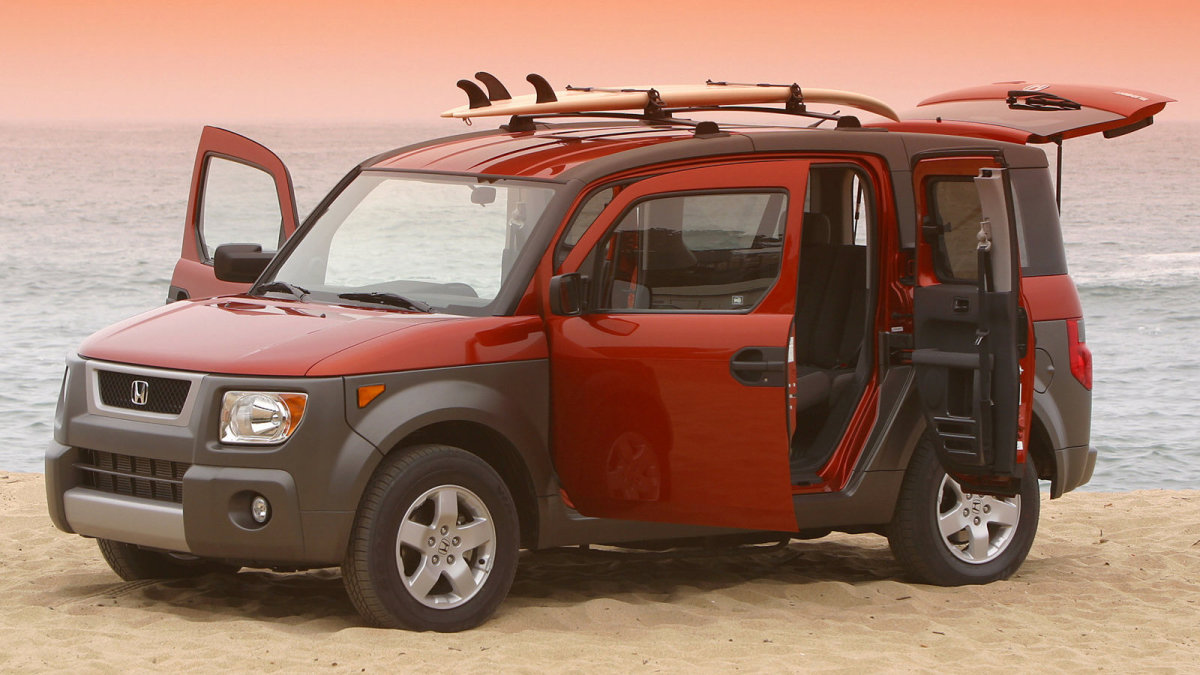
Privacy, often overlooked in car camping discussions, receives thoughtful consideration in the Element’s design. The vehicle’s elevated seating position and strategically positioned windows minimize visibility from outside, while the rear clamshell tailgate, combined with a flip-up rear window, creates a sheltered area when open perfect for sitting out light rain while enjoying your morning coffee.
Aftermarket enthusiasts have embraced the Element’s potential, developing specialized sleeping platforms, custom window coverings, and even mini kitchen setups that slide from the rear cargo area.
The Element’s practical features extend beyond just sleeping space. Its side doors open wide in a unique clamshell configuration, providing excellent access for loading gear or arranging your sleeping space.
The water-resistant upholstery materials stand up well to the inevitable spills and dampness that accompany outdoor adventures. For longer journeys, many owners install roof racks or cargo boxes to accommodate additional equipment while preserving the precious interior sleeping space.
Though no longer in production, the Honda Element maintains a passionate following among outdoor enthusiasts, with well-maintained used models often commanding premium prices specifically for their camping capabilities.
Its combination of sleeping comfort, practical design features, and rugged durability makes it the gold standard for car camping, establishing a benchmark against which other vehicles are measured.
2. Subaru Outback (2015-Present)
The Subaru Outback has earned its reputation as the quintessential adventure vehicle, beloved by outdoor enthusiasts for its remarkable versatility including its surprising competence as a sleeping platform.
With the rear seats folded down, the Outback offers approximately 75 inches of relatively flat sleeping space sufficient for most adults to stretch out comfortably.
What sets the Outback apart from many competitors is the nearly flat surface created when the rear seats are folded, with only a slight incline that many campers find helps with blood circulation while sleeping.
Subaru seems to understand its customer base well, as evidenced by thoughtful design features that enhance the car camping experience. The roof rails come standard, allowing for easy installation of cargo boxes that free up interior sleeping space.
The Outback’s substantial ground clearance 8.7 inches in most models permits access to remote camping spots that would be inaccessible to standard passenger cars, expanding your overnight options significantly.
For those venturing into wilderness areas, the all-wheel drive system provides reassuring capability on unpaved forest roads and moderate off-road terrain.
Climate control represents another area where the Outback excels for overnight stays. Many modern Outbacks feature an efficient climate system that can run in ventilation mode overnight without draining the battery excessively maintaining comfortable sleeping temperatures in moderate weather conditions.

The vehicle’s excellent insulation also helps maintain temperature stability, keeping you warmer in cold conditions and cooler during summer camping trips than many competing models.
Privacy considerations haven’t been overlooked either. The Outback’s window line sits higher than many cars, naturally limiting visibility into the rear cargo area.
The rear windows have enough tint to obscure casual glances, though experienced car campers typically augment this with simple window covers for complete privacy.
The relatively quiet cabin a signature Subaru feature in recent generations contributes to better sleep quality, with road and wind noise well controlled even in older models.
Perhaps most impressively, the Outback achieves its sleeping capabilities without sacrificing its primary function as a practical daily driver. Unlike dedicated adventure vehicles with compromised on-road manners, the Outback delivers comfortable highway performance, reasonable fuel efficiency (particularly the non-turbocharged models), and civilized road behavior.
This dual-purpose functionality explains why the Outback has developed such a devoted following among weekend warriors it transitions seamlessly from Monday commuter to Friday escape vehicle, complete with built-in bedroom.
3. Toyota Sienna (2011-Present)
Though minivans have fallen from fashion in recent decades, the Toyota Sienna stands as compelling evidence that these family haulers deserve serious consideration from car camping enthusiasts.
The Sienna’s interior dimensions create sleeping accommodations that rival many small RVs, with configurations that can comfortably sleep multiple adults.
With second-row seats removed or folded and third-row seats stowed, the Sienna offers a cavernous flat space measuring approximately 87 inches long by 47 inches wide dimensions that easily accommodate even tall campers with room to spare.
The Sienna’s sliding doors on both sides deliver unmatched accessibility when setting up your sleeping space or retrieving gear without disturbing your sleeping partner.
Higher trim levels feature power doors that can be particularly convenient during rainy setup sessions. The minivan’s low step-in height compared to SUVs makes midnight bathroom trips less precarious, especially appreciated by those with mobility limitations or when camping with elderly companions.
Privacy features in the Sienna deserve special mention. Most models come equipped with privacy glass on all rear windows, and many include integrated sunshades for the rear side windows, creating a surprisingly private sleeping environment without additional modifications.
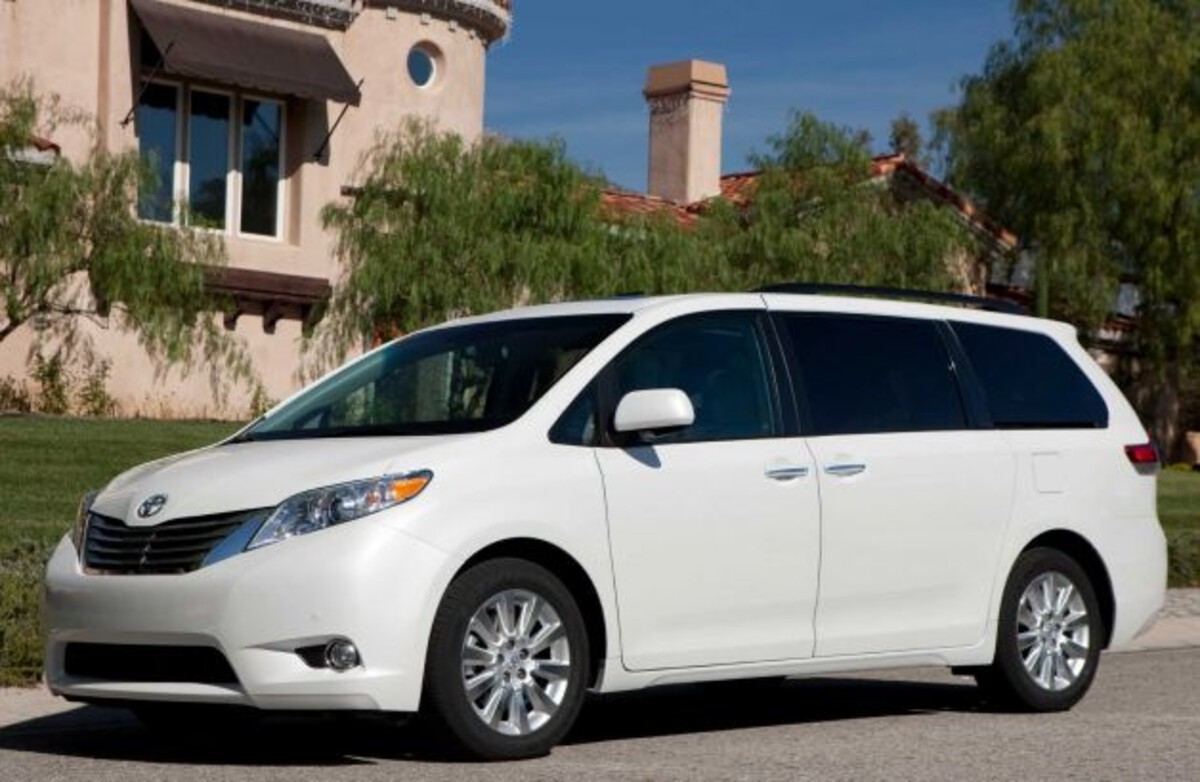
The vehicle’s height allows for standing room in many areas a luxury when changing clothes or organizing gear that SUVs simply cannot match. This combination of space and privacy has made the Sienna particularly popular among solo female travelers who appreciate the security and comfort of the enclosed space.
Climate management, critical for comfortable sleep, receives thoughtful engineering in the Sienna. The tri-zone climate control system allows for precise temperature regulation, while rear climate controls enable adjustments without moving to the front seats.
The available AWD system in older models (and standard hybrid AWD in newer generations) provides confidence in diverse weather conditions and on unpaved campsite roads.
The hybrid models offer an additional advantage for overnight stays the ability to power small appliances or maintain climate control without running the gasoline engine continuously.
While the Sienna may lack the adventure aesthetic that attracts many outdoor enthusiasts to more rugged-looking vehicles, pragmatic campers recognize its unmatched combination of sleeping space, comfort features, and reliability.
Aftermarket support has grown accordingly, with companies now offering specialized sleeping platforms, window coverings designed specifically for the Sienna, and even conversion kits that transform the minivan into a mini-camper with remarkable efficiency.
For those who prioritize sleeping comfort over image, the Sienna presents a compelling option that outperforms many more expensive adventure vehicles in practical overnight functionality.
4. Volvo V90 Cross Country (2017-Present)
The Volvo V90 Cross Country represents the sophisticated European approach to adventure vehicles blending luxury appointments with surprisingly capable overnight accommodations.
Though wagon body styles have declined in popularity in North America, the V90 Cross Country exemplifies why this configuration deserves consideration from discerning car campers.
With rear seats folded, the V90 creates an impressively flat sleeping platform measuring approximately 78 inches in length sufficient for most adults to stretch out completely.
What distinguishes the V90 Cross Country from other luxury offerings is the thoughtful engineering applied to its folding seat mechanism. Unlike many vehicles where folded seats create an uneven surface with gaps and ridges, the Volvo’s seats fold to create a nearly perfectly flat surface with minimal intrusion from wheel wells.
This attention to detail makes an enormous difference in sleeping comfort, eliminating the pressure points and awkward positioning that plague overnight stays in many other vehicles.
The V90 Cross Country’s climate management features particularly shine for car camping applications. The sophisticated climate control system maintains stable temperatures with remarkable efficiency, while the panoramic moonroof (standard on most trim levels) can be partially opened for ventilation without compromising security.

The exceptional insulation quality a hallmark of Volvo design keeps the cabin notably quieter than most competitors, contributing significantly to sleep quality at noisy campsites or highway rest areas.
Privacy considerations receive the Scandinavian design treatment in the V90, with deeply tinted rear windows and available integrated rear window sunshades.
The wagon’s lower profile compared to SUVs provides an advantage in certain camping scenarios, making the vehicle less conspicuous when parked for overnight stays in urban or suburban environments where stealth is beneficial.
The carpeted cargo area, while requiring more maintenance than rubberized surfaces, provides additional comfort and insulation when sleeping directly on the cargo floor.
Perhaps most impressively, the V90 Cross Country achieves its sleeping capabilities while maintaining Volvo’s legendary seats widely considered among the most comfortable in the automotive industry.
This matters significantly for car camping trips, as drivers arrive at their destination less fatigued after long drives. The Cross Country variant adds increased ground clearance and more robust underbody protection compared to the standard V90, allowing access to moderately challenging forest roads and remote campsites that would be problematic for conventional luxury vehicles.
For those seeking overnight adventures without sacrificing refinement, the V90 Cross Country delivers a compelling blend of capability and comfort rarely found in the automotive world.
Also Read: 8 Cars With Double-Layer Center Consoles for Organized Storage
5. Chevrolet Suburban (2015-Present)
The Chevrolet Suburban stands as the veritable titan of car camping, with interior dimensions that approach small apartment proportions. This full-size SUV has maintained essentially the same mission for decades: maximize interior space while providing genuine capability.
For overnight accommodation, the Suburban delivers spectacular results, offering sleeping dimensions that exceed even purpose-built camping vehicles.
With second and third rows folded (or optionally removed in some configurations), the resulting flat space measures approximately 98 inches in length by 62 inches in width dimensions that easily accommodate two adults with room for gear storage alongside.
The Suburban’s substantial height creates another advantage for overnight stays the ability to create elevated sleeping platforms that maintain significant storage space underneath.
This arrangement, popular among serious car campers, allows for organized gear storage while keeping the sleeping surface completely flat and properly positioned.
Some enthusiasts install simple drawer systems beneath these platforms, creating remarkably efficient living spaces within the vehicle’s cavernous interior.
Climate management, crucial for comfortable sleep, benefits from the Suburban’s powerful HVAC system, which can quickly heat or cool the massive interior space. Many models feature rear auxiliary climate controls, allowing temperature adjustments without accessing the front dashboard.
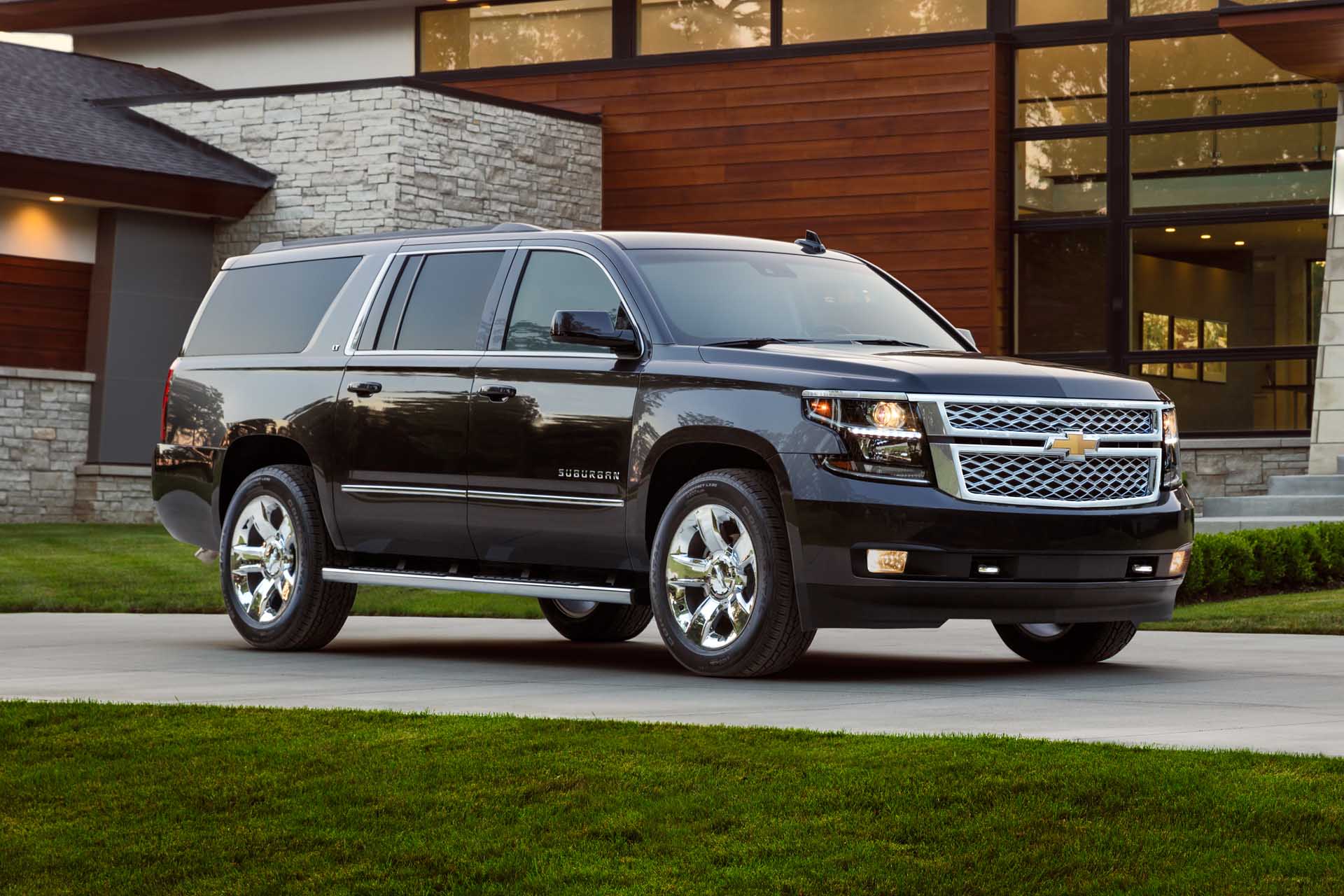
The vehicle’s substantial thermal mass works advantageously for overnight stays, as the large interior volume resists rapid temperature fluctuations once properly heated or cooled.
For extreme weather camping, few non-specialized vehicles can match the Suburban’s climate management capabilities. Privacy features include deep window tinting on most models and sufficient height to prevent casual observation from outside.
The elevated seating position creates a sense of security during overnight stays, with excellent visibility of surroundings. The Suburban’s recognizable profile as a family vehicle rather than an obvious camping rig provides a measure of stealth when needed for overnight parking in developed areas an advantage over more specialized overland vehicles that immediately announce their purpose.
While the Suburban’s considerable dimensions create challenges in urban environments and limit access to some remote trails, they translate directly into unmatched sleeping comfort.
The vehicle’s substantial ground clearance, available four-wheel drive systems, and robust construction allow confident travel on moderate off-road trails to reach remote camping locations.
Modern Suburbans also offer remarkable refinement considering their truck-based architecture, with noise isolation and ride quality that facilitate restful sleep even in less-than-ideal conditions.
For those who prioritize sleeping space and comfort above all other considerations, the Suburban’s combination of massive interior volume, flat load floor, and genuine capability remains unmatched in the mainstream vehicle market.
5 Cars With Back Seats You Can’t Sleep On
These passenger-hostile vehicles feature rear seating areas seemingly designed to prevent comfortable extended use, with aggressive bolstering, intrusive hardware, and awkward angles that make sleeping nearly impossible.
Their poorly executed fold-flat systems create substantial gaps, hard ridges, and uneven surfaces that become painfully apparent within minutes of attempting to use them as emergency sleeping accommodations.
Inadequate climate control for rear passengers means sleepers experience either freezing cold or oppressive heat depending on the season, with no practical way to maintain comfortable overnight temperatures.
What might seem like a minor design oversight becomes a significant limitation during road trips, leaving travelers facing expensive hotel stays when weather or remoteness might otherwise make sleeping in the vehicle an attractive option.
1. Mazda MX-5 Miata (All Generations)
The Mazda MX-5 Miata represents perhaps the antithesis of car camping comfort, with a cabin so diminutive that overnight accommodation approaches physical impossibility for most adults.
This legendary roadster, celebrated for its handling prowess and connection to the road, achieves these dynamic qualities partially through its extremely compact dimensions.
The total interior volume measures among the smallest of any production car, with minimal space between the seatback and rear bulkhead, essentially eliminating any possibility of reclining beyond the normal seating position.
The Miata’s seats themselves, while excellently engineered for spirited driving with good lateral support and sporty bolstering, become instruments of torture during attempted overnight stays.
The aggressive side bolsters that hold drivers securely during cornering become painful pressure points when attempting side-sleeping positions.
The limited seat track travel prevents taller occupants from fully extending their legs even in normal driving positions, making sleep postures anatomically impossible regardless of flexibility or determination.
Climate control presents another insurmountable challenge for overnight Miata accommodation. The cabin’s minimal insulation—a deliberate design choice to reduce weight and enhance driving feedback results in rapid temperature fluctuations that mirror outside conditions.
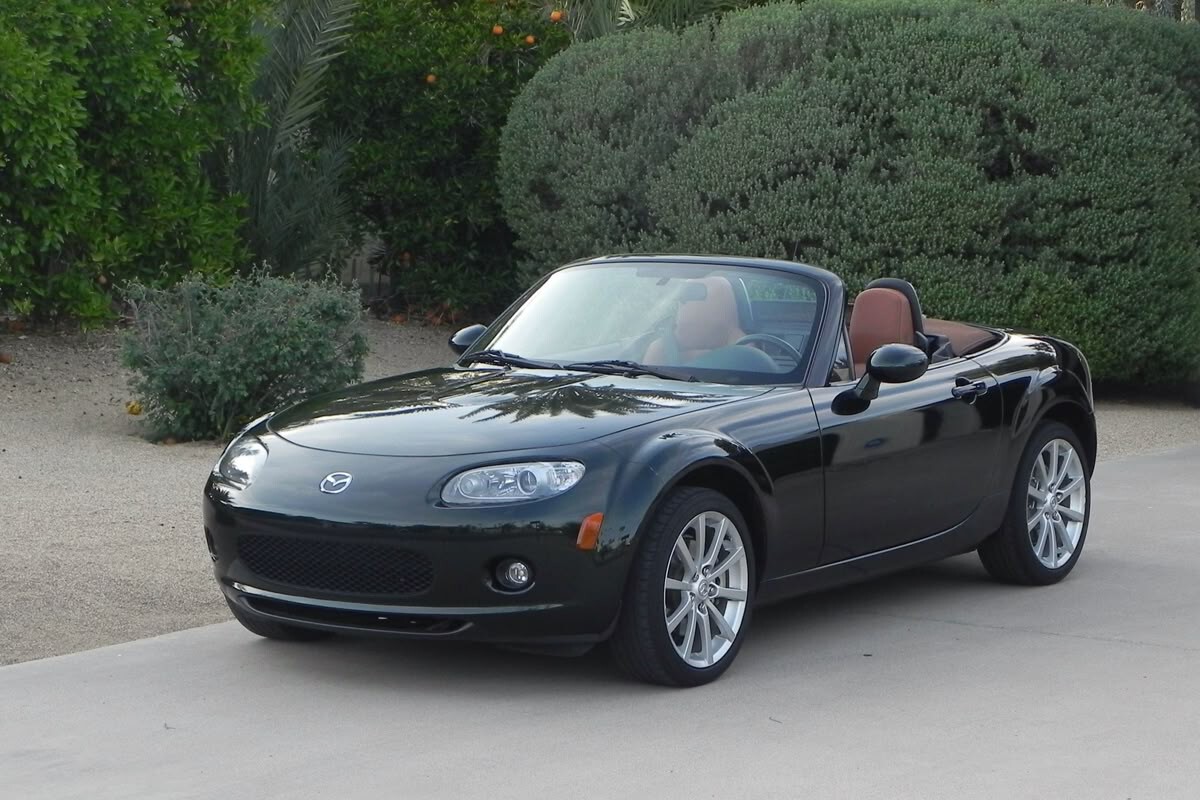
In soft-top models, the minimal sound deadening and thin roof material amplify every environmental noise, from light rainfall to ambient parking lot sounds, creating an acoustic environment fundamentally incompatible with restful sleep.
The convertible top’s security limitations also create legitimate safety concerns for overnight occupancy in many environments. Storage limitations compound the Miata’s unsuitability for overnight stays.
The minuscule trunk can barely accommodate a weekend bag, leaving no space for even the most minimal camping equipment. The complete absence of rear seats eliminates even the theoretical possibility of creating additional storage or sleeping space.
Attempts to pack necessary overnight gear invariably intrude on the already critically limited passenger space, further reducing the minimal available sleeping room to absurd proportions.
While the Miata excels brilliantly at its intended purpose delivering pure driving enjoyment through an intimate connection between driver and machine this specialization comes at the expense of practical versatility, particularly for overnight accommodation.
Even the most determined car campers, those who have successfully made hospitable bedrooms from unlikely vehicles, typically admit defeat when confronting the Miata’s spatial limitations.
For Miata owners planning road trips, the calculus becomes simple: budget for proper accommodation, as the car categorically refuses to double as sleeping quarters without inflicting significant physical and psychological distress on its occupants.
2. Porsche 911 (All Modern Generations)
The Porsche 911, automotive icon and performance benchmark for decades, stands among the worst possible choices for overnight accommodation despite its “2+2” seating configuration suggesting limited rear passenger capacity.
The reality of the 911’s rear seats quickly becomes apparent to anyone attempting to utilize them for sleeping they exist primarily as supplementary storage space or accommodations for small children during brief journeys.
For adult sleeping purposes, these vestigial seats create a uniquely torturous experience that combines severely restricted dimensions with awkwardly positioned hard surfaces.
The fundamental architecture of the 911, with its rear-engine layout, creates several insurmountable obstacles for overnight comfort. The engine’s location directly behind the cabin generates significant heat transfer into the interior, particularly noticeable several hours after driving when attempting to sleep.
This heat, combined with the limited ventilation options with windows closed for security, creates a greenhouse effect that rapidly becomes unbearable in anything but the coolest ambient conditions.
The engine’s proximity also transmits subtle vibrations through the vehicle structure even when completely shut down, with thermal contraction noises periodically disturbing light sleepers.
The 911’s sloping roofline, essential to its iconic silhouette and aerodynamic efficiency, severely restricts vertical space in the rear seating area. The resulting head clearance proves insufficient even for children to sit upright, let alone adults attempting to find comfortable sleeping positions.
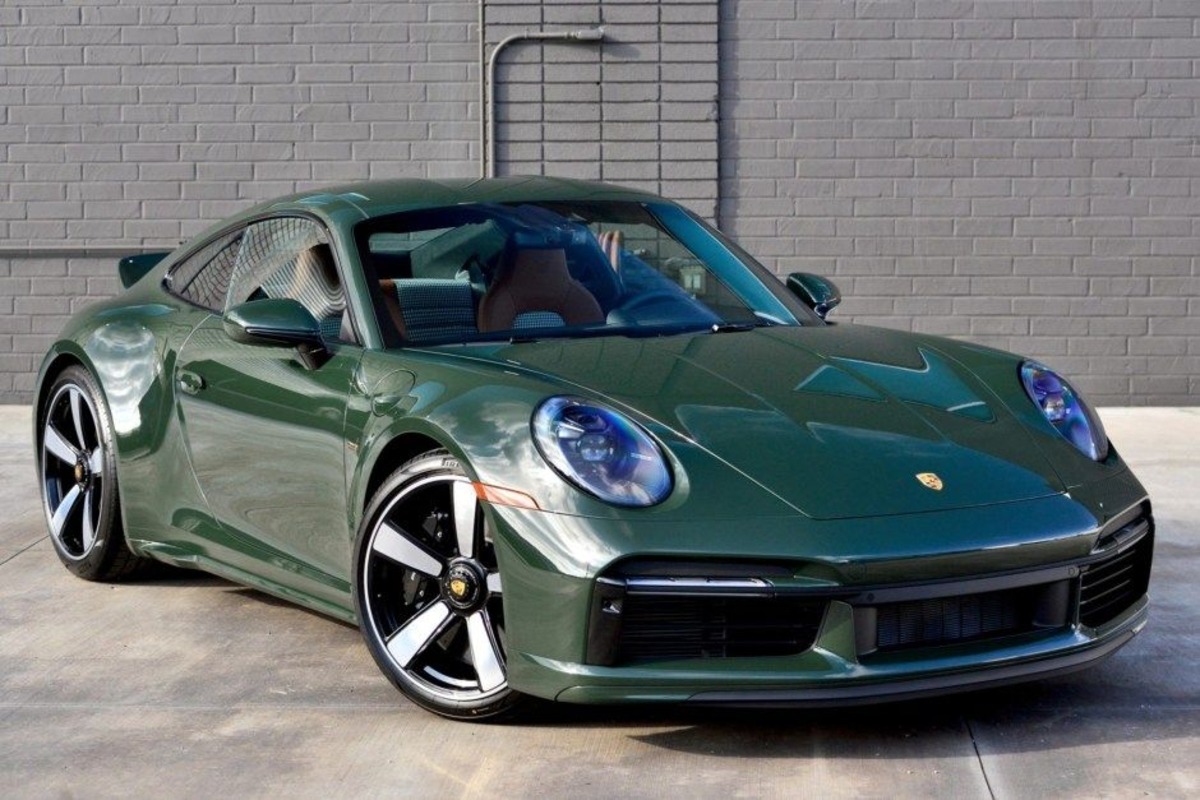
The front seats, while exceptional for driving purposes with their focused support and performance orientation, refuse to recline sufficiently for comfortable sleeping postures.
Their aggressive bolstering designed to hold drivers in place during high-g cornering creates painful pressure points during extended sedentary periods. The 911’s interior materials compound these issues.
The premium leathers and synthetic surfaces, selected for their appearance and tactile quality while driving, become problematically sticky against skin during extended contact in sleeping positions.
The minimalist padding on many interior surfaces, particularly in sportier trim levels, leaves occupants acutely aware of every hard structural element beneath the aesthetic surfacing.
The cabin’s focused acoustic tuning, which enhances the engine’s sonorous qualities while driving, unfortunately amplifies outside noises during stationary overnight periods.
While the 911 delivers unparalleled driving experiences and projets undeniable status, these qualities come with categorical compromise of overnight utility.
Even the most spacious variants in the model range typically the base Carrera models with fewer performance additions remain fundamentally hostile to sleep.
The 911’s brilliance stems precisely from its specialized nature and focused mission, with overnight accommodation capacity sacrificed entirely on the altar of driving dynamics and iconic design proportions.
For 911 owners planning extended road trips, the decision becomes unavoidable: arrange proper accommodation or face a night of spectacular discomfort in one of the world’s finest driving machines turned worst possible bedrooms.
3. BMW M3 (All Generations)
The BMW M3, regardless of generation, presents a particularly disappointing overnight accommodation experience because its exterior dimensions suggest practicality that the interior configuration fundamentally fails to deliver.
This high-performance sedan, with its substantial footprint and four-door practicality (in most recent generations), creates an initial impression of potential sleeping utility that rapidly dissolves upon actual attempt.
The performance-focused design philosophy permeates every aspect of the interior, creating an environment optimized for driving dynamics at the significant expense of restful accommodation.
The M3’s rear seats, while technically adequately sized for adult passengers during normal use, incorporate aggressive bolstering and sculpted shapes that create unavoidable pressure points when attempting to lie across them.
Unlike standard 3-Series models with more conservative seat designs, the M3’s performance-oriented rear seats feature pronounced center humps and rigid bolsters that make side-sleeping positions particularly uncomfortable.
The seat materials themselves, typically a combination of leather with grippy Alcantara inserts, create friction against clothing when shifting positions a minor annoyance during driving but a significant sleep disruptor.
Attempting to utilize the M3’s front and rear seat combination by folding down rear seatbacks reveals another critical limitation: unlike more practical BMW models, most M3 generations feature only a small pass-through opening rather than fully folding rear seats.
This design choice, made to increase chassis rigidity for performance handling, prevents the creation of a continuous sleeping surface from front seat to the trunk.
Even in generations with folding rear seats, the resulting surface contains substantial gaps and height variations that prove uncomfortable even with additional padding materials.
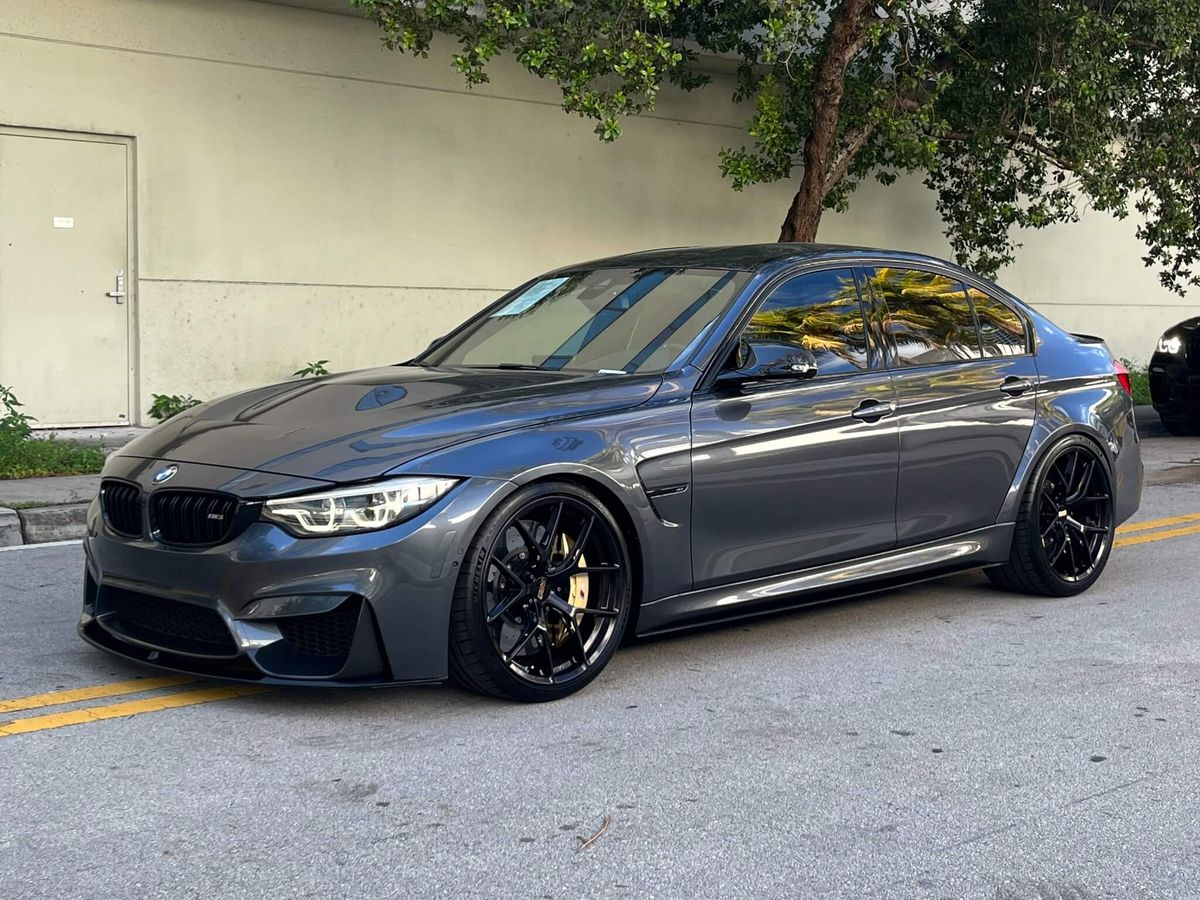
The M3’s ride characteristics further compromise sleep quality. The performance-tuned suspension, featuring stiffer springs, more aggressive damping, and reduced compliance compared to standard models, transmits road texture and environmental vibrations into the cabin with remarkable efficiency.
This sensation, appreciated during engaged driving for its feedback, becomes deeply problematic when parked, as the vehicle responds noticeably to even slight external forces such as wind gusts or nearby vehicle movements in rest areas.
The interior noise characteristics create additional overnight challenges. The reduced sound insulation (a weight-saving measure in performance models) and performance exhaust systems (even when not operating) allow significantly more environmental noise to permeate the cabin compared to luxury-oriented BMW models.
The carbon fiber reinforced plastic roof panels found in many recent M3 generations, while contributing to lower center of gravity and improved handling, lack the sound-dampening properties of traditional materials, making rainfall particularly disruptive to sleep quality.
For M3 owners contemplating car camping, the vehicle’s performance-focused design philosophy creates a fundamental incompatibility with overnight comfort that no amount of adaptation can fully overcome.
The very features that make the M3 exceptional on winding roads and racetracks its focused performance orientation and prioritization of driving dynamics directly undermine its utility as temporary accommodation.
The resulting overnight experience delivers neither the performance thrills the vehicle normally provides nor the basic comfort necessary for restful sleep.
4. Range Rover Evoque (All Generations)
The Range Rover Evoque presents a particularly deceptive proposition for car camping enthusiasts, with its adventure-suggesting brand heritage and substantial exterior dimensions creating expectations of utility that the interior configuration spectacularly fails to deliver.
This compact luxury SUV prioritizes striking exterior styling and urban sophistication above practical considerations, resulting in one of the most compromised sleeping arrangements in the SUV segment.
The dramatically sloping roofline and aggressively tapered rear section signature design elements of the Evoque directly translate to severely restricted interior volume compared to vehicles with similar footprints.
The Evoque’s rear seat area presents multiple challenges for overnight stays. The severely raked roofline reduces headroom to minimal levels in the rear quarters, while the narrow side windows create a noticeable claustrophobic effect during extended occupancy.
Unlike traditional Land Rover products with their emphasis on functional space utilization, the Evoque sacrifices cubic feet to aesthetic considerations at every opportunity.
The steeply angled rear window further compromises available space, creating an interior envelope that narrows significantly toward the rear of the vehicle.
When folded, the Evoque’s rear seats reveal another critical limitation: they don’t create anywhere near a flat surface. Instead, the folded seatbacks rest at a pronounced angle that makes comfortable sleeping positions essentially impossible without extensive supplemental padding or specialized equipment.
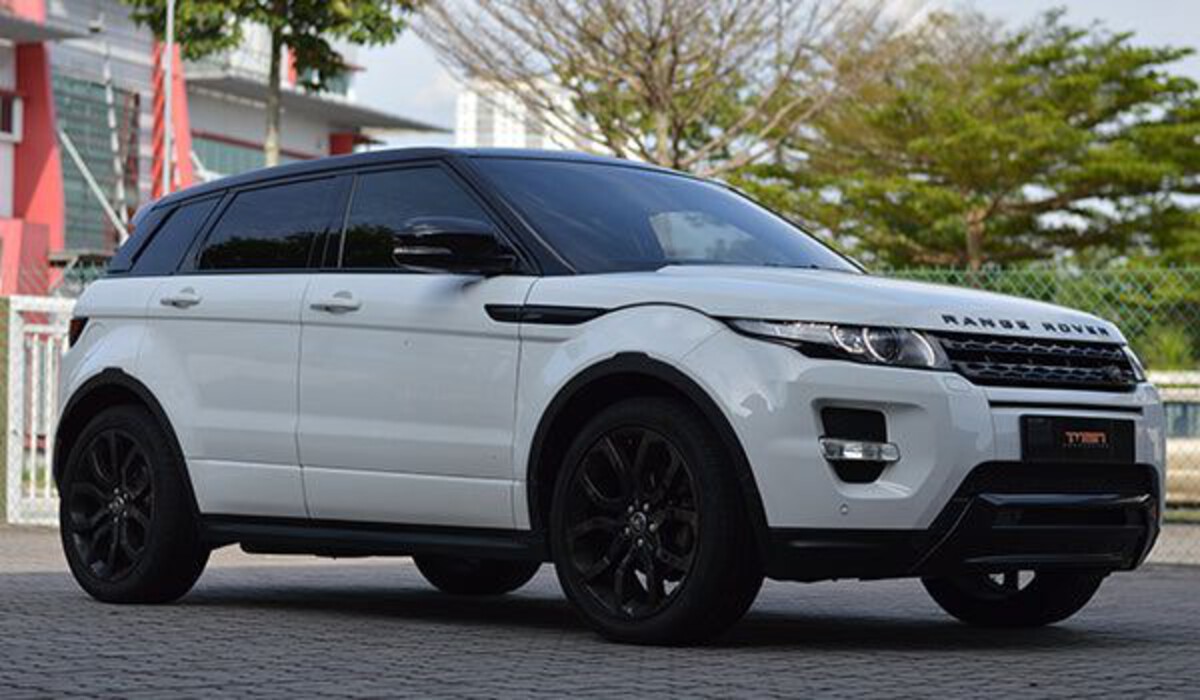
The substantial gap between folded rear seats and front seatbacks further complicates matters, requiring additional material to bridge an otherwise uncomfortable divide. Even with these adaptations, the resulting sleeping surface remains notably shorter than most competitors due to the Evoque’s truncated rear overhang.
The luxury appointments, ironically, create additional overnight complications. The premium interior materials often light-colored leathers and delicate trim pieces prove surprisingly vulnerable to the inevitable scuffs and moisture exposure that accompany camping use.
The complex electronic systems, including the sometimes-temperamental infotainment interface, drain the battery more rapidly than simpler vehicles when used for extended periods while camping.
The sophisticated air suspension system, available on higher trim levels, occasionally releases audible pressure adjustments throughout the night as temperature changes affect system pressures.
Perhaps most frustratingly, the Evoque carries the Range Rover name and associated premium pricing while delivering an interior package less practical for overnight stays than many economy-oriented competitors.
The considerable investment required to purchase and maintain an Evoque could alternatively secure a less prestigious but vastly more practical vehicle plus high-quality traditional camping equipment.
For Evoque owners discovering these limitations, aftermarket solutions prove limited compared to more popular camping vehicles, with fewer specialized accessories available to mitigate the vehicle’s fundamental packaging compromises.
The Evoque thus exemplifies form triumphant over function a vehicle whose striking appearance and prestigious badging come at the direct expense of practical overnight utility.
5. Mercedes-Benz AMG GT (All Variants)
The Mercedes-Benz AMG GT represents the absolute nadir of car camping potential, with a cabin environment so fundamentally hostile to overnight accommodation that attempts border on experimental human endurance testing.
This purpose-built performance grand tourer makes no pretense of practicality, with every design decision prioritizing driving dynamics and aesthetic impact over utilitarian considerations.
The resulting vehicle essentially eliminates the possibility of emergency overnight stays through a combination of spatial limitations and ergonomic hostility unmatched in the modern automotive landscape.
The AMG GT’s seating configuration presents the first insurmountable obstacle to overnight use. As a strict two-seater with aggressively bolstered performance seats, the vehicle offers no flat surfaces whatsoever.
The seats themselves, while masterpieces of performance engineering with their multiple adjustment options and exceptional lateral support, prove torturous during extended static use in anything but their designed upright positions.
The limited recline angle intentionally restricted to maintain proper driving position prevents even moderately comfortable sleeping postures for occupants of any size.
The cabin architecture creates additional complications through its focused driver orientation. The tall center console, which houses transmission controls and infotainment interfaces, creates a substantial physical barrier between driver and passenger spaces, preventing any possibility of stretching across seats.
The dramatically sloped windshield and low roofline further constrain movement options, with occupants finding their range of motion severely limited in all directions.
The footwells, narrowed to accommodate the wide front wheels and performance brake systems, eliminate any possibility of finding comfortable lower body positions.
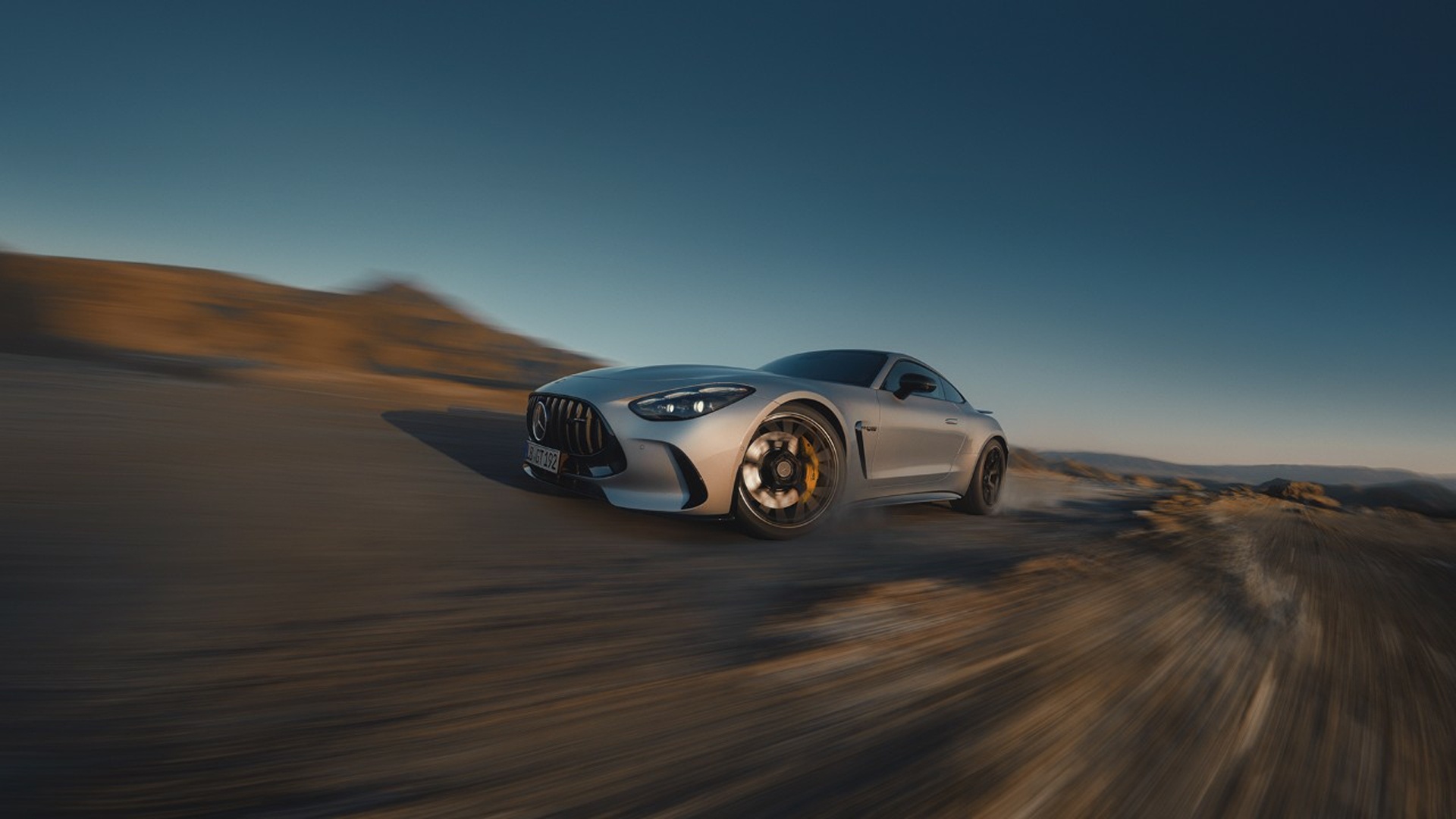
Climate control presents additional challenges in the AMG GT’s minimal interior. The performance-oriented HVAC system, designed primarily to quickly reach optimal temperature for driving comfort rather than maintain stable overnight conditions, tends toward temperature fluctuations during extended stationary operation.
The extensive use of glass in the cabin design including the large windshield and available panoramic roof creates pronounced greenhouse effects in sunlight and rapid heat loss in cold conditions, requiring continuous climate system operation that quickly depletes the vehicle’s battery.
The acoustic environment compounds overnight discomfort in unique ways. The minimal sound insulation, a deliberate choice to save weight and enhance driving feedback, renders the cabin extraordinarily susceptible to external noises.
The performance exhaust system, even when completely cooled, can generate occasional ticking sounds as components contract that prove particularly disruptive during quiet overnight hours.
The carbon fiber structural elements found in many variants produce distinctive creaking noises as temperature changes cause minute dimensional changes in the material.
For AMG GT owners facing unexpected overnight situations, the vehicle’s absolute unsuitability for sleeping essentially forces alternative arrangements regardless of circumstances.
Unlike more practical sports cars that might accommodate emergency overnight stays with sufficient determination, the AMG GT’s specialized configuration renders such attempts functionally impossible without accepting severe physical discomfort.
This single-minded performance focus while delivering spectacular driving experiences creates perhaps the least hospitable overnight environment in the contemporary automotive landscape.
Also Read: 10 Vehicles With Glove Boxes Big Enough for More Than Paper

